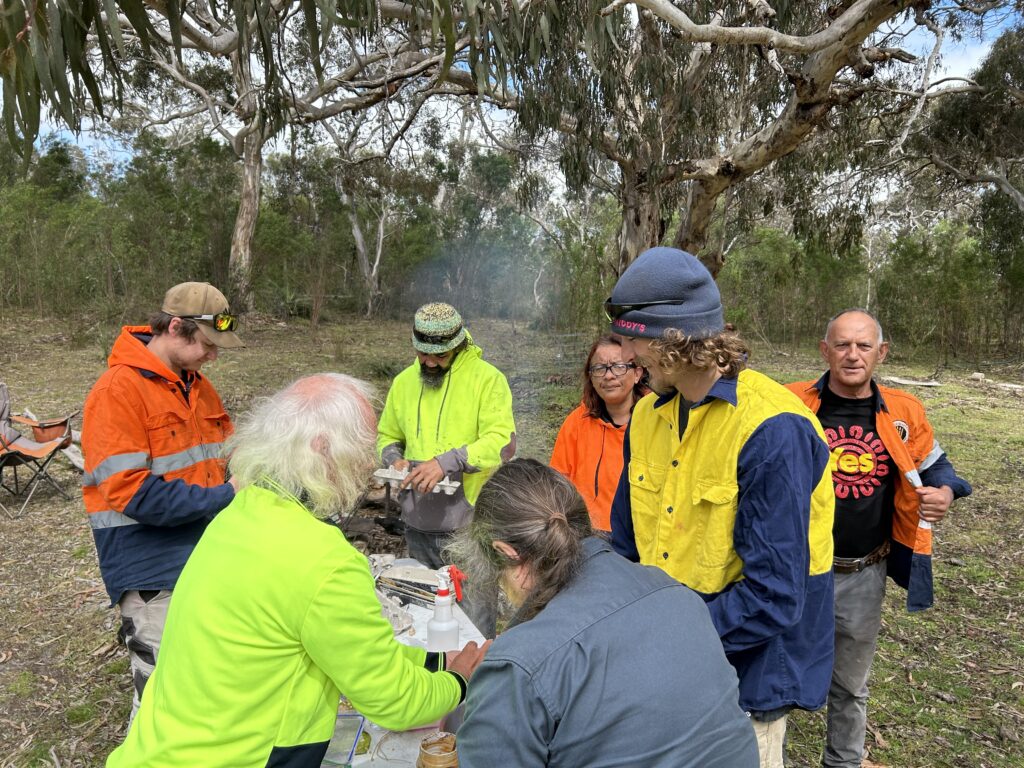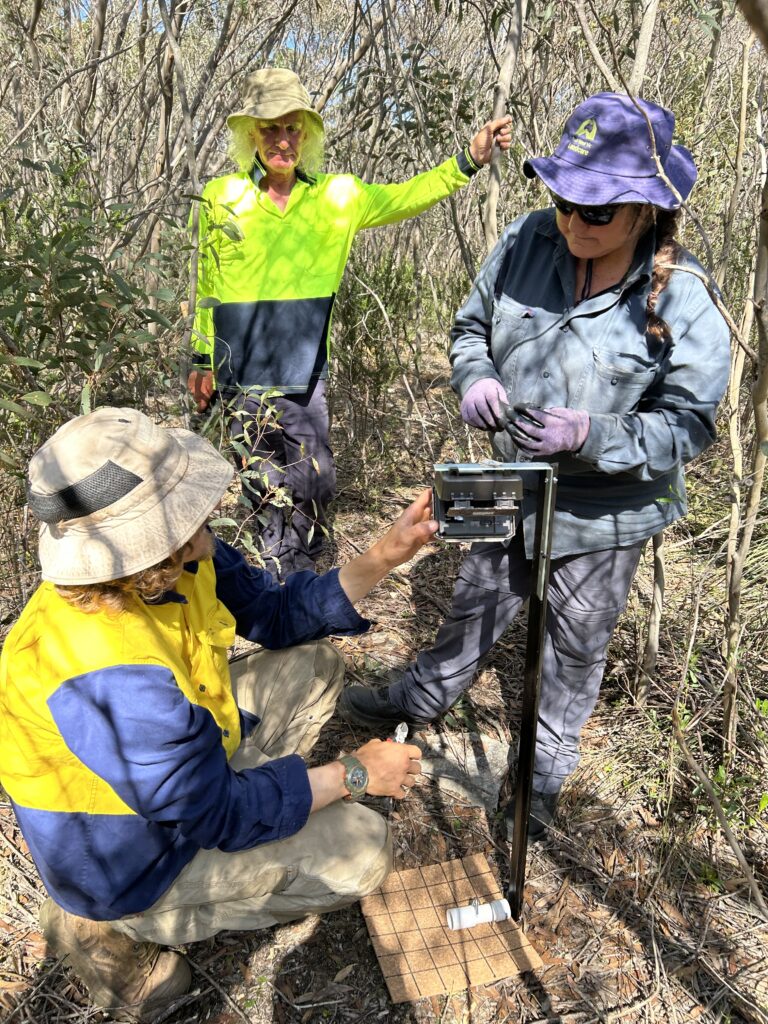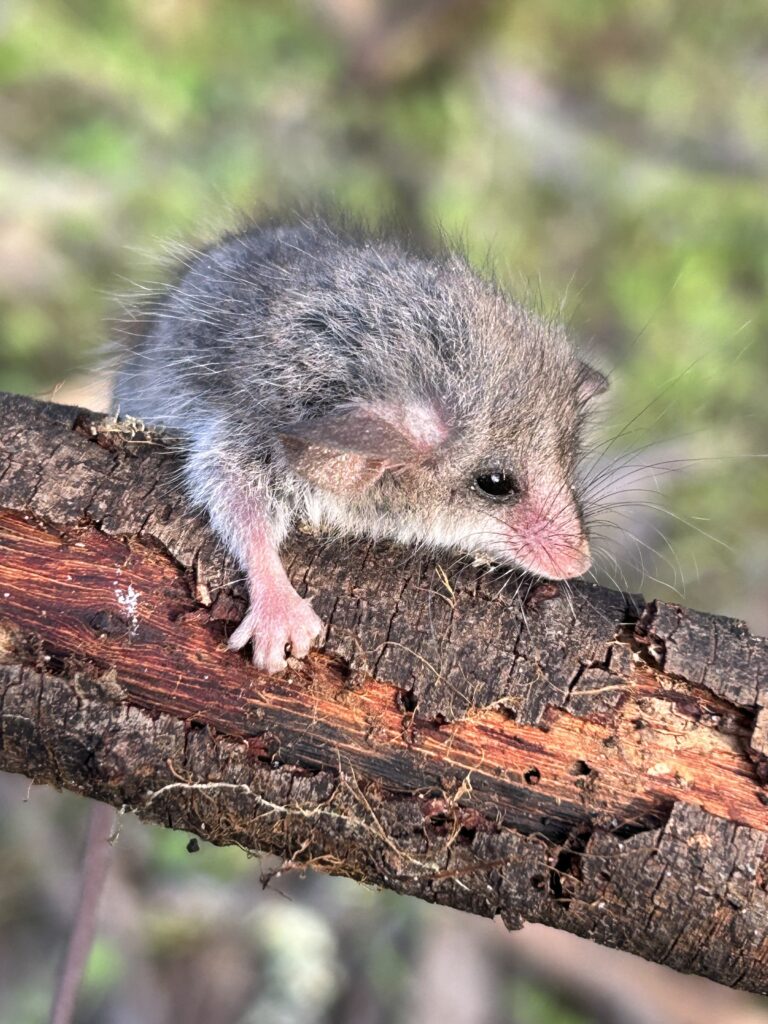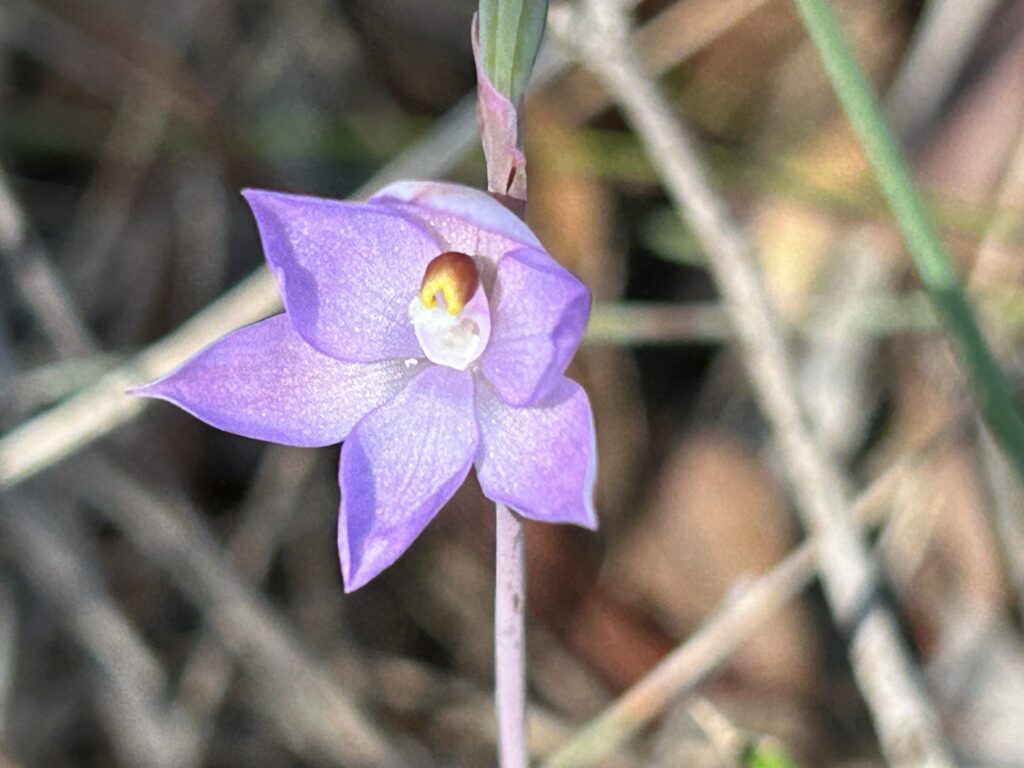Exciting finds on biodiversity survey – Pygmy possums and Malleefowl at Bullock Bridge!
Bullock Bridge, a newly acquired property of the Nature Foundation, is an important 203 hectare conservation property east of Kingston on the Limestone Coast, SA. It was purchased by Nature Foundation in January 2024, and is described as a “small but highly significant parcel of bushland” … “part of one of the largest inland blocks of native vegetation in this southern region with very high biodiversity values”. Baseline biodiversity surveys were required to provide early management recommendations and inform the management plan.
NGT has recently undertaken a flora and fauna survey for Nature Foundation, and we can now showcase some of the species we have come across so far. This survey has included the help of NGT volunteer Andy Lines and Burrandies Aboriginal Corporation field crew both during the set-up period and survey week.
After a recce trip with Vicki and Sue in late September, Paul (from Nature Foundation) and I worked out a plan of attack as to what will be done where and how each method will be rolled out. Although, access to two sites was going to be difficult due to internal and fence-line tracks being quite overgrown with regenerating tea-tree and wattles. So, during the two set-up days we managed to trim a few sections to achieve a safe entry/exit point and to minimise the risk of spiking any tyres. With the generous support of our Eaglehawk Waterhole volunteer Andy Lines and our good friends at Burrandies Aboriginal Corporation, we established all five sites in good time 4-5 days out from commencing the survey.
It is common practice to set trap sites up and have everything in place (but closed) 4-5 days before commencing your survey (e.g. pitfall traps dug into the ground and other traps placed in location). This allows time for the surrounding animals to become accustomed to the traps before they are opened and baited. In total ten sites were set up with a range of survey methods including pitfall lines, Elliott and cage traps, roofing tiles (for small reptiles), funnel traps (for reptiles that may jump out of pitfall traps), bird surveys and hidden cameras (with and without an attractant/bait).

The results so far indicate a diverse property with many different vegetation types, that has maintained an expected high diversity of birds, reptiles and small mammals. The nocturnal species list was very encouraging, when at night around the campfire we witnessed a Sugar Glider calling, a Common Brushtail Possum, a White-striped Free-tailed Bat and several Koalas. Nocturnal birds included Australian Owlet-nightjar, Southern Boobook Owl and Tawny Frogmouth. Daytime catches included a plethora of lizards and the ‘cream on the top’ was two species of Pygmy Possum!
Both the Western and Little Pygmy Possums were caught in pitfall traps and from several sites too. Mainly associated with mallee but also Stringybark. Several Malleefowl mounds were found with one active, a second being worked and ready for use and a further two old mounds which hadn’t been used for some years.
The vegetation on the reserve was outstanding with few grassy weeds to be found over most of the property although woody weeds like Prickly Wattle and Coastal/Sallow Wattle are emerging and/or thick in some areas rending habitats a monoculture. But with some considered effort this could be ‘contained to controlled’ in the short to medium term. Wildflowers were thick in some places and some old growth Blue Gums offered hollows. Recent fire/s were evident in parts of the property which will prove important areas in the short-term for the larval stages of many insects to develop along with fresh browsing for numerous birds, reptiles, and small mammals.
We can thankfully say, ‘no tyres were spiked or damaged during the undertaking of the set up or survey’ phew…
This project is supported by the Limestone Coast Landscape Board’s Grassroots Grants program, and is funded by the regional landscape levy





